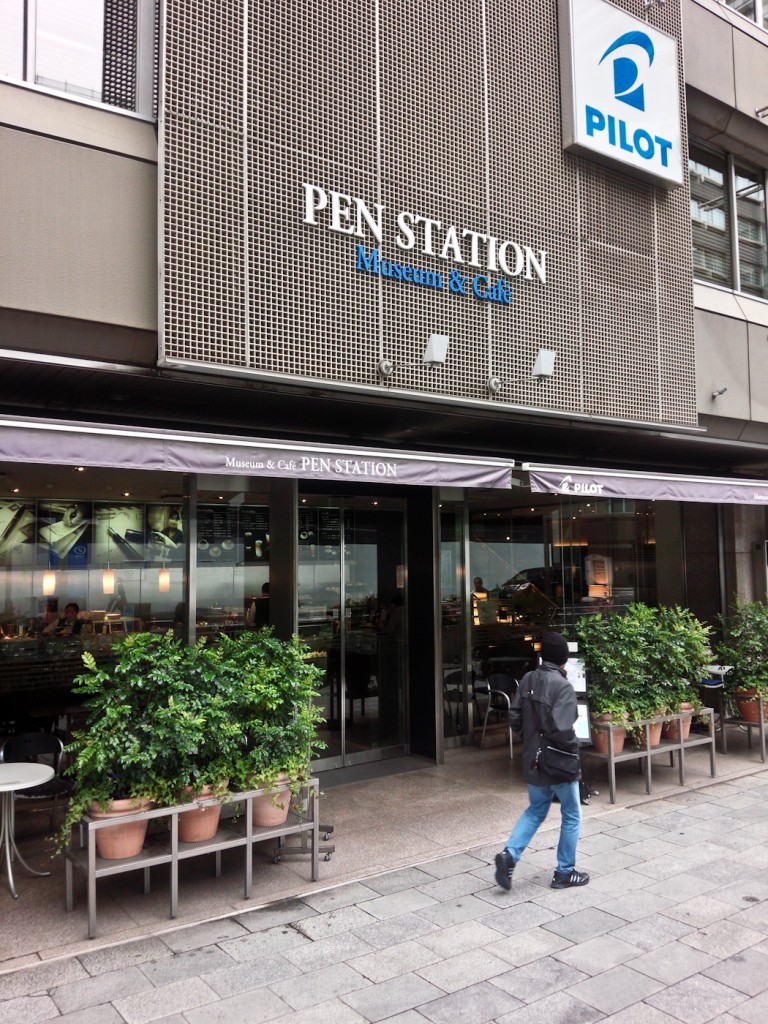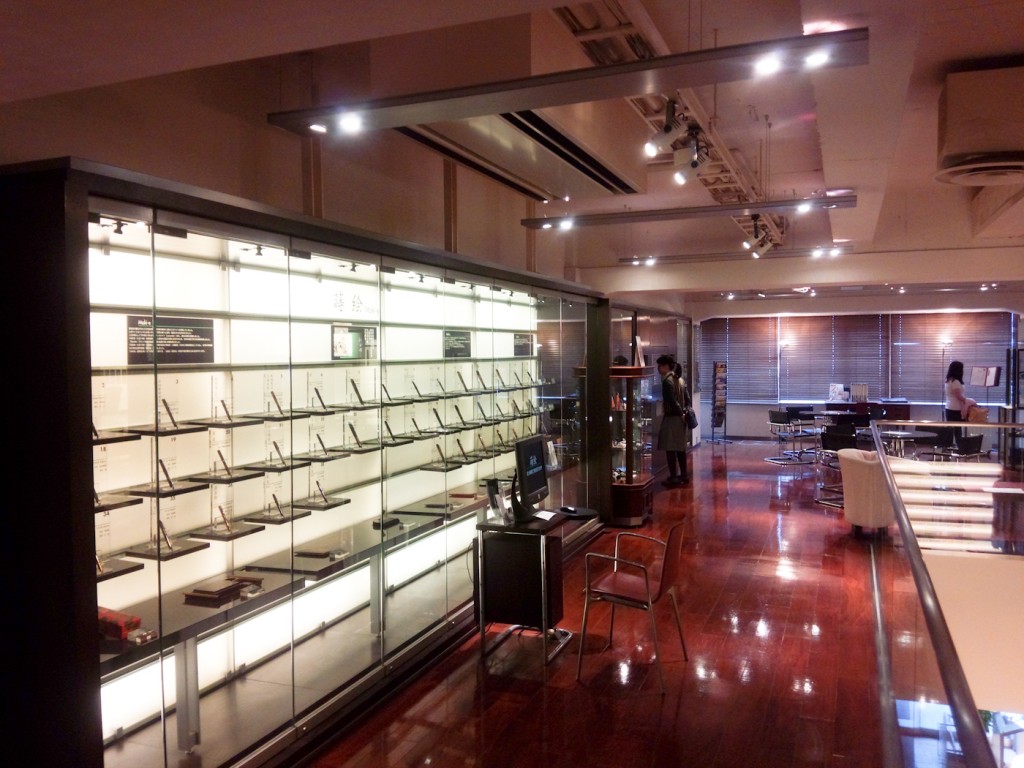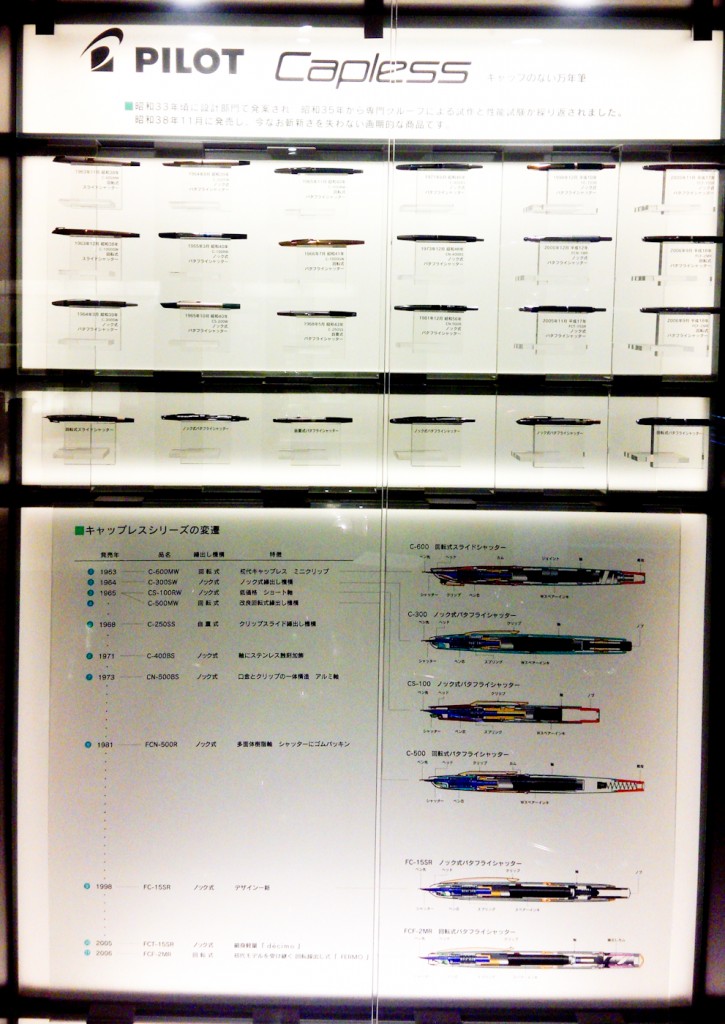The only museum in Tokyo exclusively dedicated to pens closed today and I couldn’t be bothered to travel an hour to see it off. That pretty much tells you all you need to know about Pilot Pen Station.
The PPS is one of those places that was more interesting than it was impressive and it wasn’t even that interesting. It had a collection of maki-e pens but, quite frankly, the expensive pen floor of Ito-ya has an equally impressive maki-e collection. There was also a wall that detailed the history of Pilot pens and a few displays on making ink and the various types of nibs Pilot makes. But that was all in Japanese.
There was also table where you could try out the various Iroshizuku inks. But that was just promotion.
My favorite part was the display of the history of Capless pens, which included charts and examples of their internal workings. My only complaint about this was that the two pens were clearly in the wrong places but no one ever bothered to correct the mistake.
Unfortunately the building itself is scheduled to be demolished and rebuilt and the museum collection will be removed and stored somewhere, probably never to return. That said, although the PPS was worth a visit, but it wasn’t worth a linger or more than one visit.
When I took some guests there last week, the museum was already in shut-down mode. Half the pens on the display of Iroshizuku inks were dry and at least one had a damaged nib. (That said: Pilot, if you need to dispose of those pens, I’ll take them off your hands…)
It had a weird schedule and would shut down on national holidays, meaning it was closed on days new pen customers might actually have a chance to see it.
Being in a business district, it also suffered from not having much around it. I treated it as a way-station between Maruzen and Ginza, especially in summer when the air conditioning was the best part of the museum.
Now it exists only in Google Maps. You can take a virtual tour here. That tour, quite frankly, is about as interesting as actually going there.
(The link to the Google Map comes from Bruno Taut at Chronicas Estilograficas.



